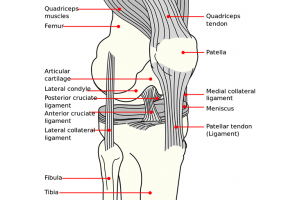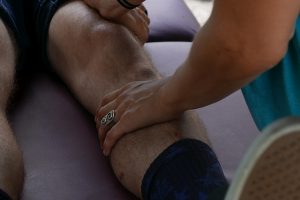Why do my knees hurt?
Your knees are made up of 3 bones, the femur (thigh), the tibia (leg) and the knee cap (patella). In healthy knees, the bone surfaces come together at the joint and the cartilage, a thick layer of gliding cushion, prevents the end of the bones from creating friction. However, when this layer of cushion wears out, the bones rub together creating friction and pain, and eventually deteriorate the bone surfaces – osteoarthritis.
The most common condition that results in the need for knee replacement surgery is osteoarthritis. Many people aged 65 and older, may have some degree of osteoarthritis and symptoms vary from stiffness to severe pain and limited mobility. Osteoarthritis is common in the knees because the knees bear the weight of the body and can severely impact a person’s lifestyle, there include walking, climbing stairs, squatting and going on tours.
What is Total Knee Replacement?
In total knee replacement surgery, the parts of the bones that rub together are replaced with metal and plastic parts. During the surgery, your surgeon will use special precision instruments including computer navigation (like GPS) to remove the damaged surface of the bones and cut the replacement surfaces to fix the implants to within 2-3 degrees of accuracy.
How will I know if I should have a Total Knee Replacement?
Your orthopaedic surgeon will perform a thorough examination of your knee including X-rays and blood tests to ensure you’re in good health before advising undergoing surgery. A total knee replacement is a major surgical procedure and should only be considered when all other treatments have failed.
There are other more conservative treatments that you and your surgeon may consider. This includes medication, injections, physiotherapy and arthroscopic debridement. Whether you decide to do a total knee surgery, you will want to know the risks involved and potential complications during and after the surgery.
What happens during a Total Knee Replacement?
Knee replacement surgery requires a hospital stay and most often is performed under regional or block anaesthesia with sedation. Do note that you will need to be fasted at least 6-8 hours before your surgery. The surgeon will begin with an incision over the knee, exposing the joint. When the bones are visible, precise instruments are used to remove the damaged area and shaping the joints to fit the implants before closing the incision. Most implants are cemented to allow immediate stability and motion. The surgery takes between two to three hours, depending on individual circumstances.
What can I expect after surgery?
As the anaesthetic wears off, you slowly regain consciousness. You will be given oral or intravenous pain medication. Your physiotherapist will help you perform a few exercises and may apply a machine to start bending the knee. This helps you to regain your range of motion in the knee. Your physical therapy should continue at home to speed up recovery. You may need to start with a walking frame for 2 weeks, then progress to a quad stick for 1-3 months.






